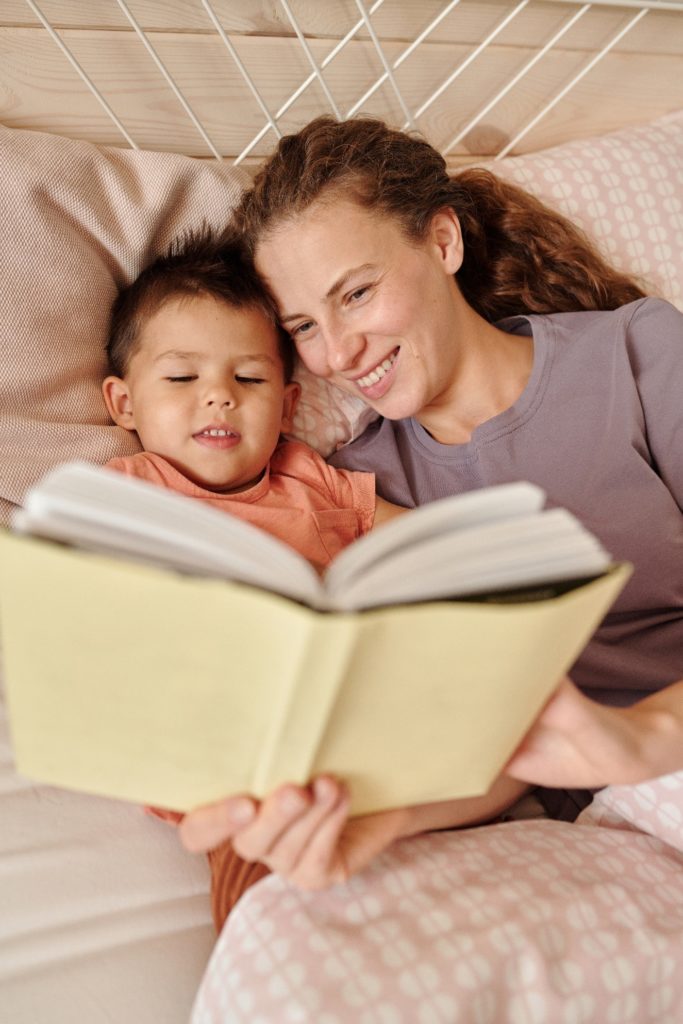
Encouraging the habit of reading is one of the best things we can do as mothers, as it opens a world of possibilities for children to know stories, learn new things and have fun for a while. But when we know we want to start pushing our little one towards reading, it can be tricky to know where to start or what kind of book to choose.
Choosing a story for your little one is a task that depends a lot on how old they are, because when it comes to stories, there are different things you’ll want to look for at different times in their childhood.
Before the age of 4
If they are not yet two years old, it’s important that their books are more like toys made of cloth or other chewy material, with eye-catching pictures, and that look like books. This will help them recognize books as fun, and if they read at home, they may even start to imitate them.
If they are between 2 and 4 years old, their books and stories should be pictures that tell a story, with eye-catching elements such as textures and raised figures. If you are telling them a story, it is a good time to recite a rhyming book, so they can practice their intonation, or perhaps a book with pictures and words to help them acquire vocabulary.
4 to 6 years old
During this age, children are already fully capable of understanding the development of a story, and around 4 and 5 years old, they begin to read their first sentences, so this age range is perfect to encourage reading with more depth and participation of your little one.
Try to keep the stories predominantly images that go along with the few sentences on the page. In addition, if they have already started reading or pre-reading, the text should be in a clear and understandable font, so as not to create confusion in the little one.
The plots of the stories at this stage should be simple, without meanings or morals, but rather fun and keep the child’s interest while acquiring reading skills.
6 to 8 years old
Between the ages of 6 and 8, children already have the more mechanical foundations of reading in place, so you can move on to more complex stories in terms of storytelling. Here, print is no longer a point of interest, as reading should no longer be too difficult.
The stories should include complementary pictures to keep the child’s attention, as reading can become tedious. Also, stories can begin to have more elaborate dialogues and narrations, but always following an easy-to-understand sequence, and you can also incorporate morals or valuable lessons in the stories.
8 to 10 years old
With all of the above, at this age you can begin to involve much more stories with a central problem that moves the plot, with a greater number of characters and settings, as well as stories that have to do with the interests of your child. The structures of the texts can also be longer and chaptered.













